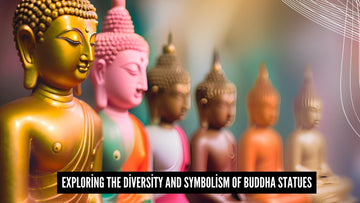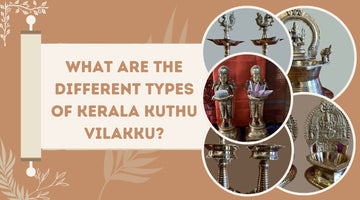Buddha statues are artistic creations and profound symbols of spiritual insight and cultural depth. Each statue embodies distinct aspects of Buddha's life and teachings, offering a glimpse into the path of enlightenment. They serve as spiritual guides, reflecting the rich tapestry of Buddhist philosophy and tradition.
This guide will explore the diverse types of Buddha statues, their meanings, and their cultural significance.
Buddha's Journey and Birthplace
Siddhartha Gautama, born in Lumbini, Nepal, set out on a spiritual quest across ancient India to understand the nature of suffering and the path to its end. After years of ascetic practices and deep meditation, he attained enlightenment under the Bodhi tree in Bodh Gaya, India. This profound realization transformed him into the Buddha, meaning "Awakened One," and he began teaching the path to Nirvana.
Buddha Stupas and the Spread of Buddhism
Buddhist stupas are sacred mounds that contain relics of the Buddha or other significant Buddhist figures. They serve as places of meditation and pilgrimage, symbolizing the Buddha's presence and teachings. The spread of Buddhism from Nepal to India and across Asia saw the construction of numerous stupas, each reflecting regional architectural styles and cultural influences.
Buddha Poses and Their Significance
The different poses of Buddha statues, known as mudras, each have unique meanings. For example:
- Dhyana Mudra (Meditation Pose):

This pose shows Buddha sitting with both hands resting on his lap, palms facing upward, and often with the right hand on top of the left. It represents meditation, concentration, and the attainment of spiritual perfection. It symbolizes the state of deep contemplation and serene mindfulness, often associated with the Buddha's period of meditation under the Bodhi tree before reaching enlightenment.
- Abhaya Mudra (Fearlessness Pose):

In this pose, Buddha's right hand is raised to shoulder height with the palm facing outward and the fingers extended upward, while the left-hand rests by his side. This gesture symbolizes protection, peace, and the dispelling of fear. It signifies Buddha's reassurance and blessing to his followers, encouraging them to face challenges with courage and calm.
- Bhumisparsha Mudra (Earth Touching Pose):

This iconic pose depicts Buddha sitting cross-legged with his left hand resting on his lap, palm up, and his right hand reaching down to touch the ground. This gesture represents the moment of Buddha's enlightenment, where he called upon the Earth to witness his right to attain it. It symbolizes steadfastness, unshakable determination, and the grounding of spiritual energy.
These poses, along with others like the Vitarka Mudra (Teaching Pose), Dharmachakra Mudra (Wheel of Dharma Pose), and Varada Mudra (Gesture of Giving), provide insight into the various aspects of Buddha's teachings and the spiritual journey. Each pose reflects a specific lesson or aspect of the path to enlightenment, offering guidance and inspiration to practitioners and followers.
Origins of Buddha Statues
Buddha statues originated in India and spread across Asia. They evolved over centuries, reflecting regional artistic styles and cultural nuances. The earliest representations of Buddha were created in the Gandhara region (modern-day Pakistan and Afghanistan), blending Greco-Roman artistic elements with Buddhist iconography.
Buddhism and Its Symbolism
Buddhism uses various symbols to convey its teachings. Buddha statues are one of the most prominent symbols, representing different phases of Buddha's life. These statues often incorporate symbolic elements like the lotus flower, which signifies purity, and the Dharma wheel, representing Buddha's teachings.
Historical Connections Between Yoga and Buddhism
Buddhism and yoga have a long history together. Both practices emphasize mindfulness, meditation, and spiritual growth. The integration of yoga practices into Buddhist traditions highlights the shared goal of achieving inner peace and enlightenment.
Buddha Purnima: Celebrating Gautama Buddha
Buddha Purnima is a significant Buddhist festival celebrating Buddha's birth, enlightenment, and death. Statues play a vital role in these celebrations. Devotees often adorn Buddha statues with flowers and offerings, commemorating the profound impact of his life and teachings.
Role of Buddhist Monks in Statue Veneration
Buddhist monks are often involved in the creation and veneration of Buddha statues. They bless the statues, making them sacred objects of worship. Monks perform rituals and recite prayers, imbuing the statues with spiritual energy that devotees believe can aid in their spiritual journey.
Famous Buddha Statues Around the World
Some of the famous Buddha statues in the world are listed below:
Leshan Giant Buddha

The world's largest stone Buddha is the Leshan Giant Buddha located in China. Carved out of a cliff, it stands at 71 meters tall. This colossal statue, facing the confluence of three rivers, is believed to calm the turbulent waters, protecting boatmen and travelers.
Tian Tian Buddha

Located in Hong Kong, the Tian Tian Buddha is a massive bronze statue representing harmony between man and nature. Situated on Lantau Island, this 34-meter-tall statue is a major tourist attraction and a significant pilgrimage site for Buddhists.
Spring Temple Buddha
At 128 meters, this Buddha statue is the highest in the world. Situated in Henan, China, it represents harmony and wealth. The monument serves as a hub for both religious and cultural activity because it is a part of a bigger complex that also houses a monastery.
Buddhas of Bamiyan
Sadly, in 2001, these historic sculptures in Afghanistan were demolished. They were important cultural icons that embodied the fusion of Buddhist and Greek art. As a reminder of the area's rich cultural past, the Buddhas of Bamiyan were etched into the rocks of the Bamiyan valley.
Grand Buddha at Ling Shan

This statue is located in China and is 88 meters tall and a major pilgrimage site. It symbolizes the vastness of Buddha's teachings. The Grand Buddha at Ling Shan is surrounded by beautiful gardens and temples, creating a serene environment for reflection and worship.
Why Choose Us
When you purchase a Buddha statue from Saanskrityam Handicrafts, you are investing in more than just a piece of art. Here’s why choosing us makes a difference:
-
Quality Craftsmanship: Since each statue is expertly created by trained artists, authenticity and longevity are guaranteed.
-
Cultural Authenticity: Our statues reflect true cultural significance, incorporating traditional designs and meanings that honor Buddhist heritage.
-
Ethical Sourcing: We guarantee that every item is made under fair working conditions as part of our commitment to ethical sourcing practices.
-
Wide Selection: We offer a diverse range of Buddha statues, allowing you to find the perfect piece that resonates with your spiritual journey and home decor.
- Customer Satisfaction: From selection to delivery, our committed customer support team is ready to help and provide a flawless buying experience.
Explore our collection today and find a Buddha statue that brings peace, beauty, and spiritual depth to your space.
Buddha statues are not just art pieces but profound symbols of spiritual and cultural significance. They inspire devotion, convey deep meanings, and connect followers to Buddha's teachings. If you're a collector, a follower, or someone intrigued by their beauty, understanding these statues can enrich your appreciation of their profound significance.
FAQs
1- How many types of Buddha statue are there?
There are many varieties, each signifying a distinct facet of the life and teachings of the Buddha. Typical varieties include standing, reclining, teaching, and meditating Buddhas.
2- Which type of Buddha is good for home?
A meditating Buddha is ideal for promoting peace and tranquility in your home. It symbolizes serenity and mindfulness.
3- How many different Buddhas are there?
There are several Buddhas in Buddhist traditions, with Gautama Buddha being the most well-known. Others include Amitabha, Medicine Buddha, and Laughing Buddha.
4- How do you identify a Buddhist statue?
Buddhist statues can be identified by their specific hand gestures (mudras), postures, and attributes like the lotus flower or the wheel of Dharma.
5- Is it okay to keep a Buddha statue at home?
It is acceptable to have a Buddha statue in your home. It is thought to bring good fortune, harmony, and calm.
6- Where should a Buddha be placed in your house?
A Buddha statue should be placed in a spotless, elevated position facing east. The best place to meditate is in your living room or a designated area.






